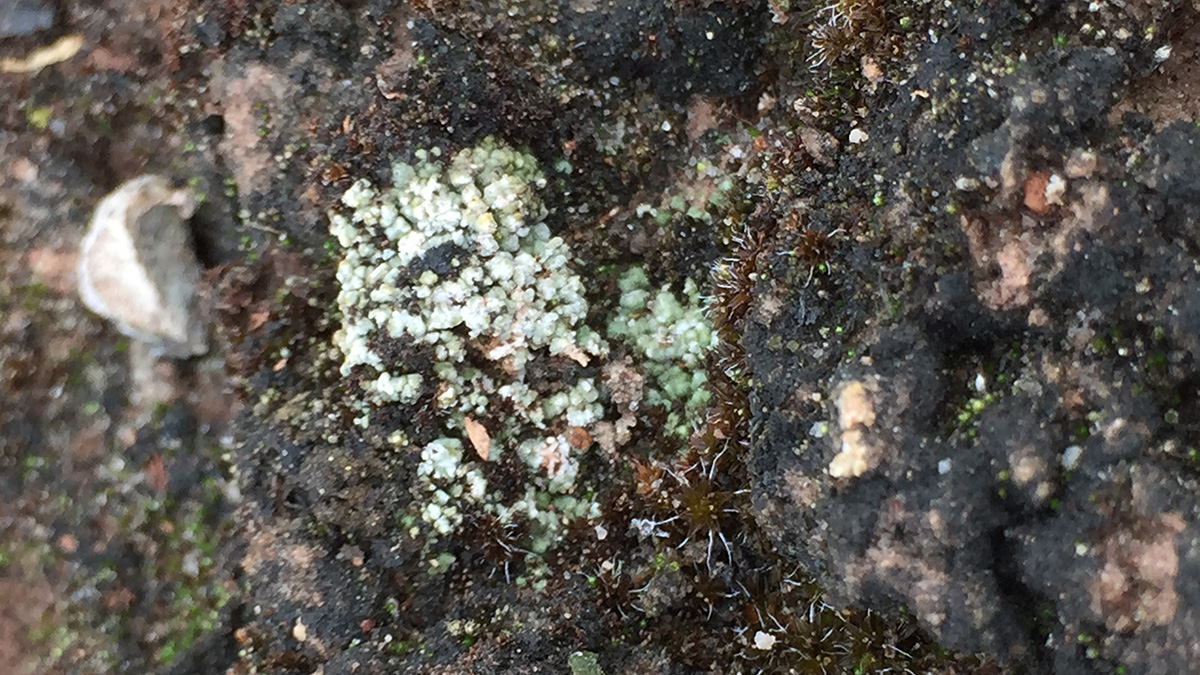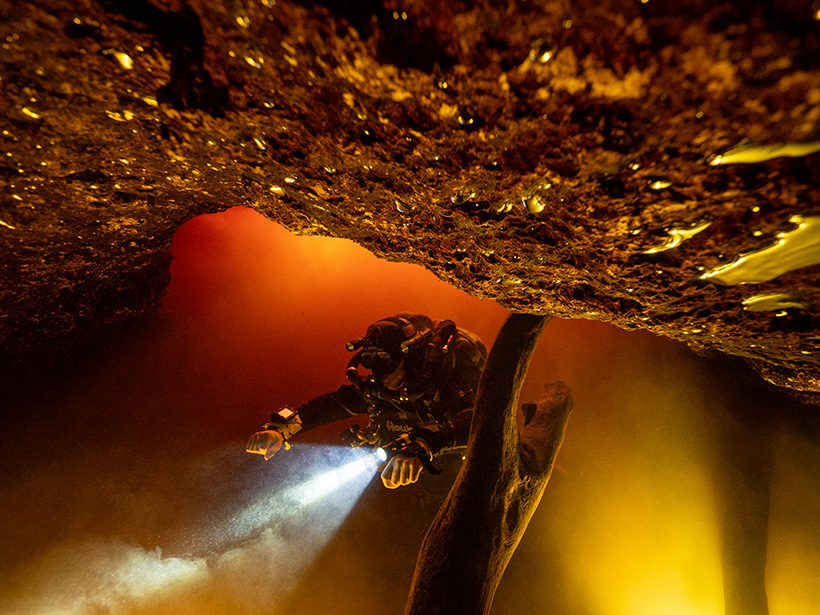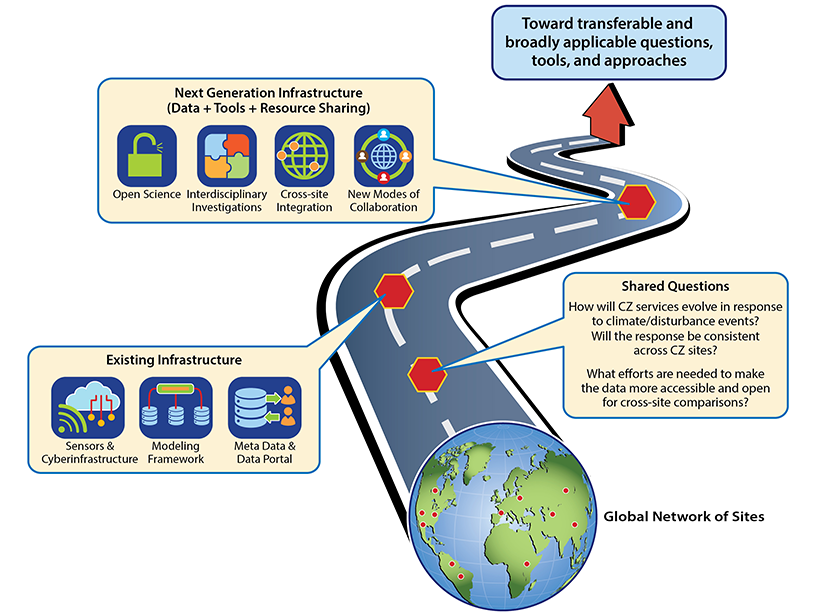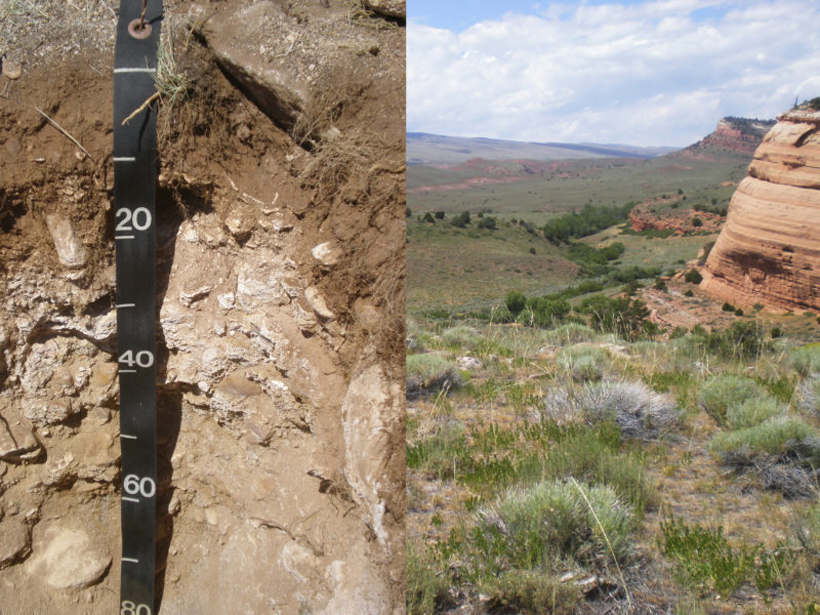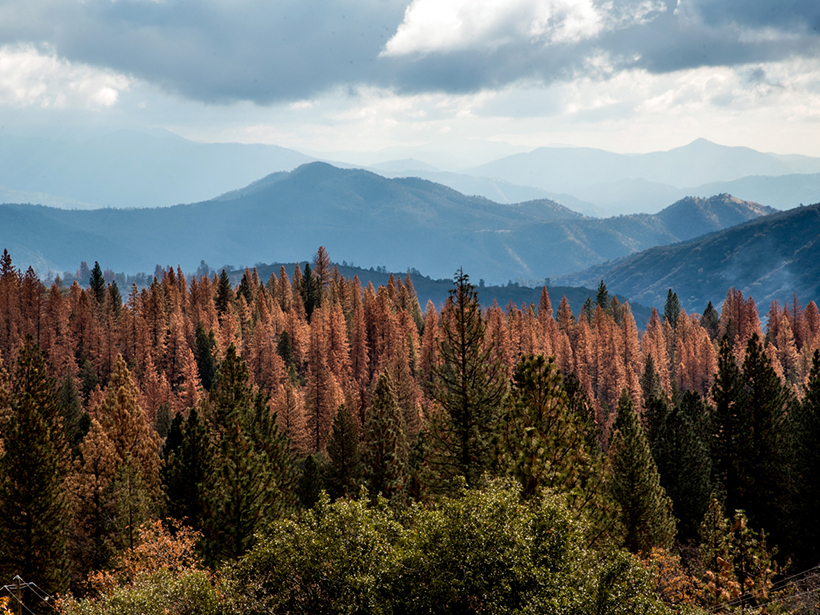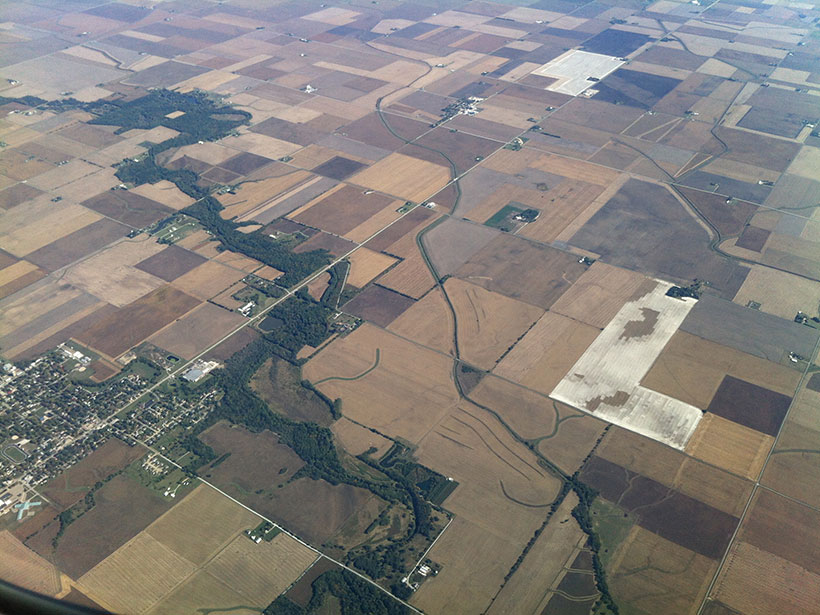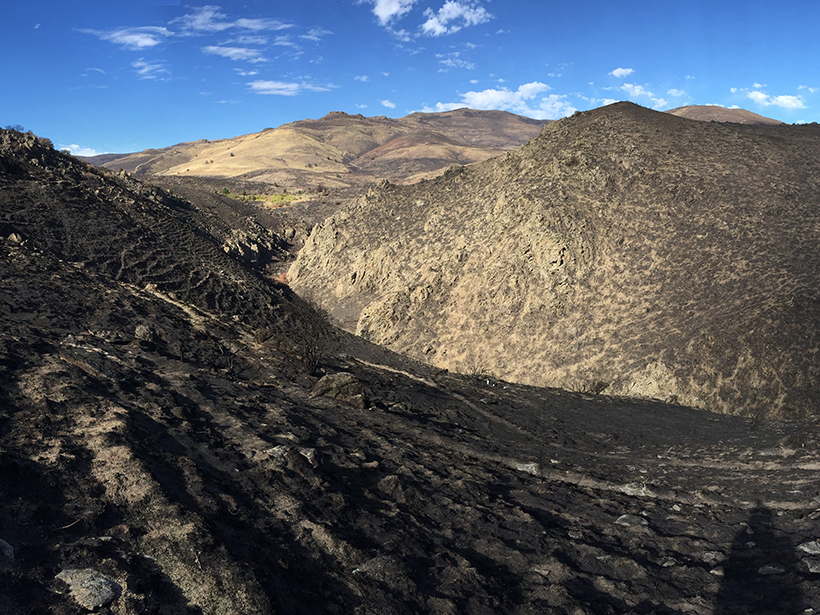Bacteria can speed up the growth of biocrust-forming organisms in nurseries, providing more material for restoration of degraded dryland soil.
Critical Zone
New Theory Connects Tree Uprooting and Sediment Movement
Tree throw from extreme wind events plays an important role in the movement of sediment and erosion on forested hillslopes. A new theory offers a novel way to measure its impact.
Evaluating the Impact and Reach of Biogeochemical Cycles
A new book examines flow of the elements in the biosphere from biological drivers to human influences, and explores the analytical and computational methods used to access biogeochemical cycles.
A New Focus on the Neglected Carbonate Critical Zone
Studies of Earth’s critical zone have largely focused on areas underlain by silicate bedrock, leaving gaps in our understanding of widespread and vital carbonate-dominated landscapes.
The Future of Critical Zone Science: Call for Papers
Contributions are invited to a new cross-journal special collection that describe novel advances in critical zone research, with specific consideration for transferable and broadly applicable science.
Turf’s Dirty Little Secret
Greenhouse gas emissions from sports fields may be scoring points for climate change.
Exploring the Engine and Drivers of Soil Formation
A new book presents a multidisciplinary perspective on soil, exploring it as a nexus for water flow, near surface (bio)geochemistry, erosion and deposition, and biologically coupled nutrient cycling.
Linking Critical Zone Water Storage and Ecosystems
The geology and the structure of Earth’s critical zone control subsurface moisture storage potential and determine the resilience of forest and river ecosystems to drought.
Critical Agents of Change at Earth’s Surface
By way of agriculture and industry, humans have major influences on the critical zone. Our past and present effects on the landscape, soil, and water will echo for a long time to come.
Soil Signals Tell of Landscape Disturbances
The lasting influence humans have on Earth’s critical zone—and how geologic forces have mediated those influences—is revealed in studies of soil and carbon migration.

